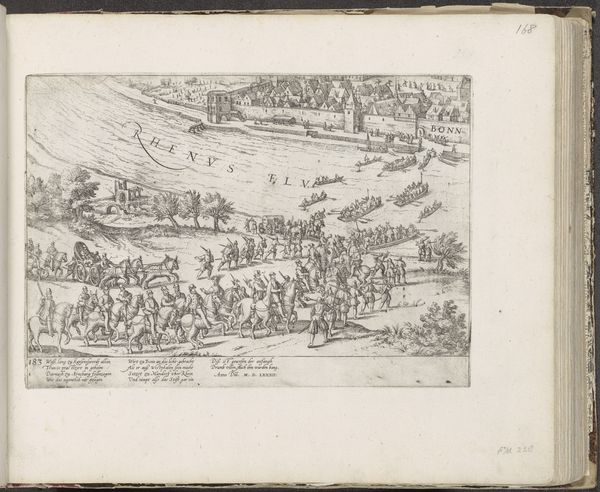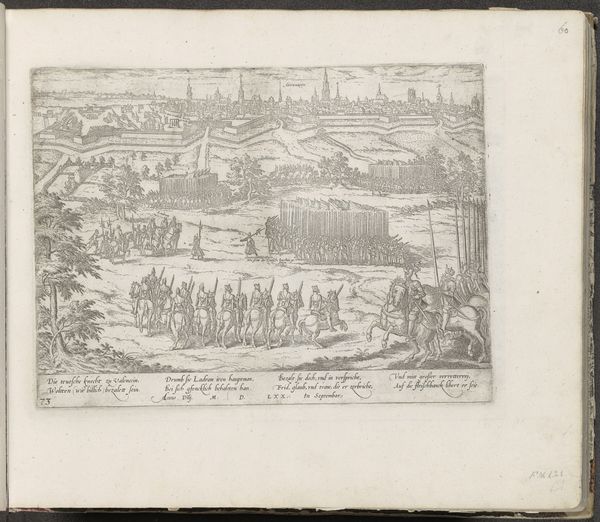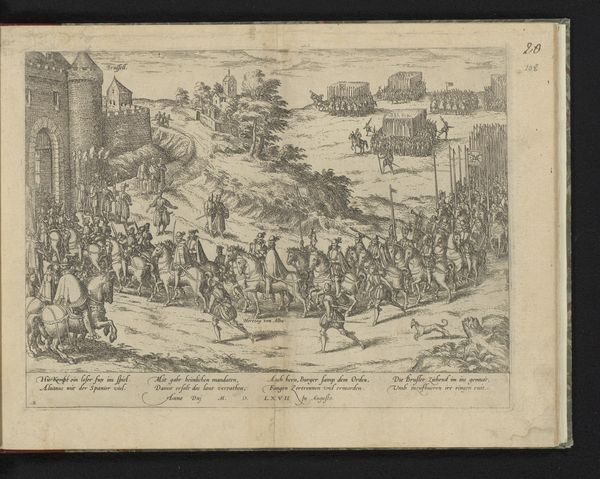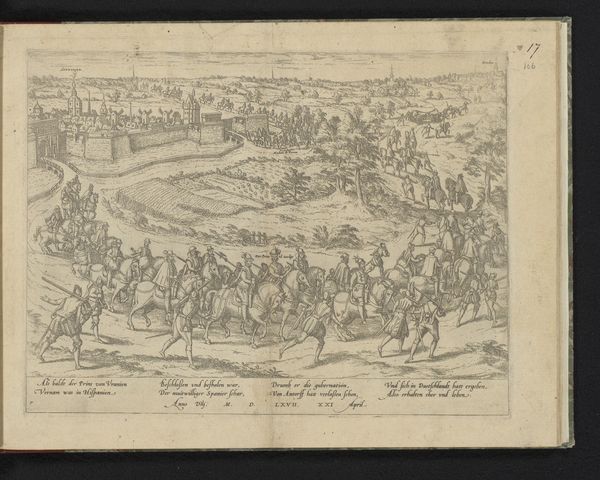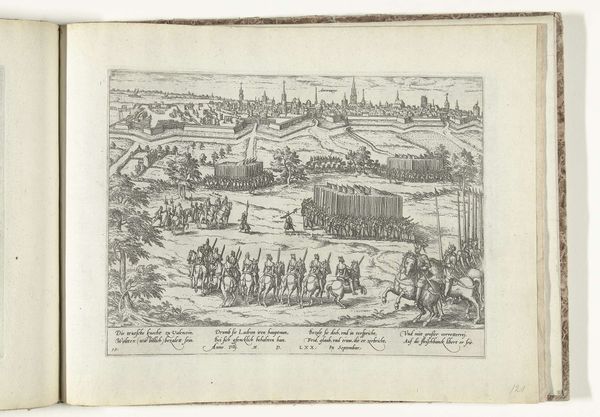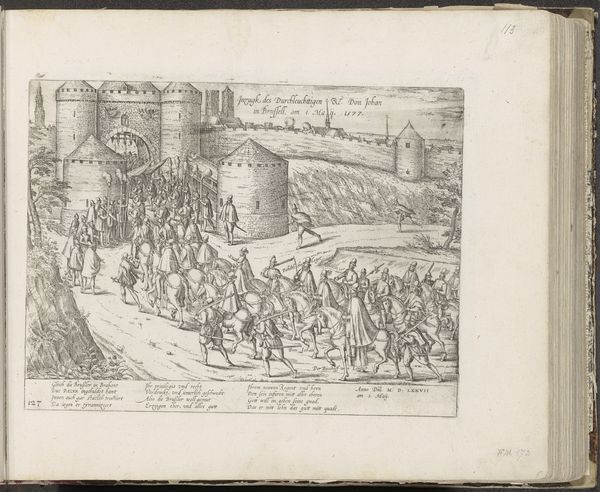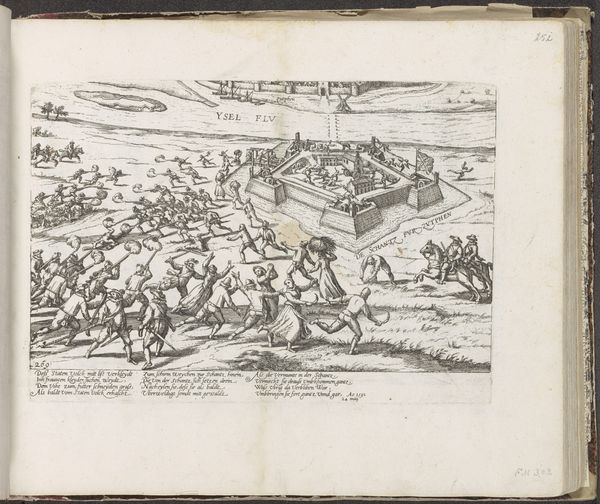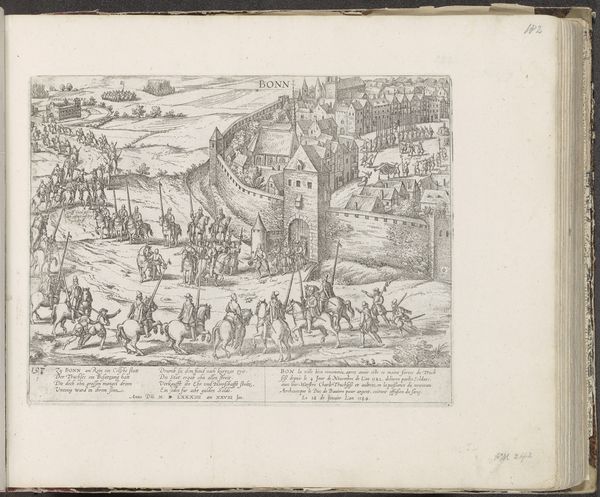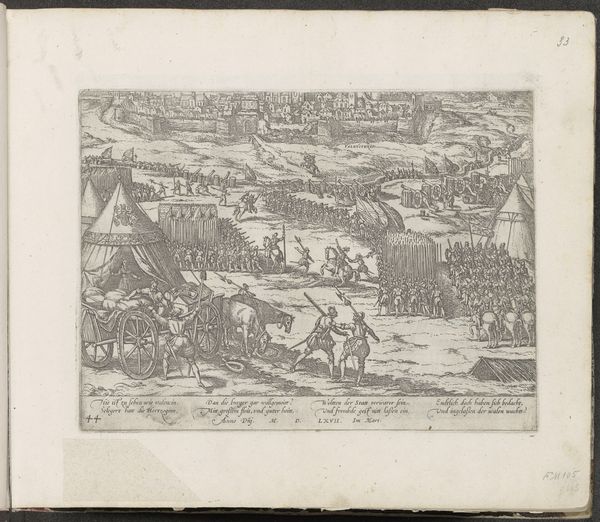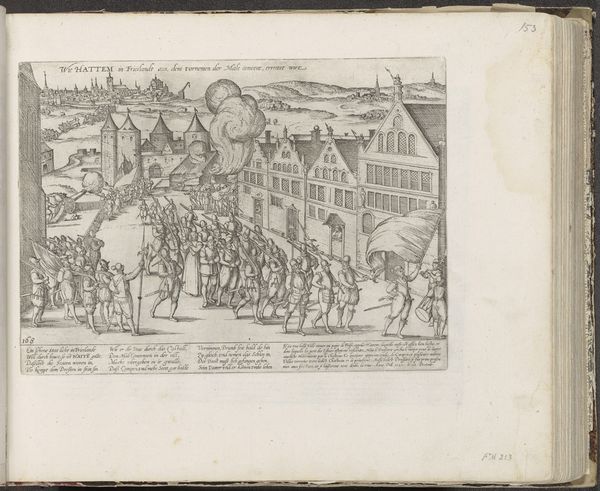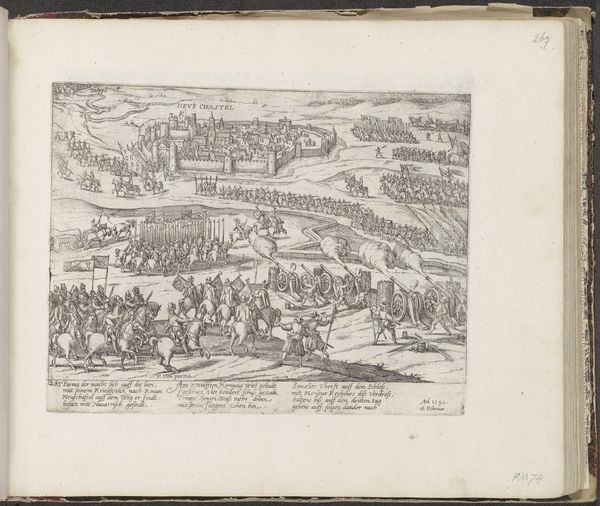
Paltsgraaf Johan Casimir trekt door de Elzas naar Frankrijk, 1576 c. 1589 - 1593
0:00
0:00
franshogenberg
Rijksmuseum
print, engraving
#
medieval
#
dutch-golden-age
# print
#
landscape
#
figuration
#
line
#
history-painting
#
engraving
Dimensions: height 210 mm, width 278 mm
Copyright: Rijks Museum: Open Domain
Curator: This engraving, likely made between 1589 and 1593 by Frans Hogenberg, captures "Paltsgraaf Johan Casimir trekt door de Elzas naar Frankrijk, 1576". It’s currently held here at the Rijksmuseum. Editor: Immediately, I notice the dynamic interplay of line work creating a sweeping sense of movement. The landscape and figures seem to vibrate with an energy. Curator: Hogenberg was part of a broader printmaking culture. These images served as early forms of mass media, shaping public perception of political and military events. Consider the labor involved in producing multiple identical prints, making historical moments accessible to a wider audience. Editor: The repetition certainly creates a feeling of visual rhythm and underscores the grand scale of the event. The precise etching creates textures, especially in the costumes, and defines space in the far background. How effectively do you think Hogenberg creates a hierarchy of focus, from foreground to background in this expansive landscape? Curator: It’s also crucial to view Hogenberg’s practice within the historical context of the Dutch Golden Age. We might think about the print as a commodity itself. The subject matter clearly glorifies military might, which perhaps indicates this print's intended audience had a pro-military attitude. Editor: Indeed, but let’s focus on how those lines create depth through shifts in texture and shading; the density varies considerably to give an impressive illusion of spatial recession. Even the seemingly uniform lines hold tiny inflections. Curator: It’s impossible, though, to divorce the "art" from its production and use, isn’t it? This print signifies a powerful ruler entering a specific social and political landscape. What were the circumstances of the day, who printed it, how widely available it became; those aspects matter to a deeper reading. Editor: Absolutely. The visual construction undeniably affects its message. Through that visual design, Hogenberg achieves something monumental, don't you agree? I leave appreciating how the formal aspects reinforce themes of scale and movement. Curator: Ultimately, engaging with both the tangible materials and production processes allows us to explore not only Hogenberg’s piece but also a pivotal historical and political moment, questioning power dynamics in the late 16th century.
Comments
No comments
Be the first to comment and join the conversation on the ultimate creative platform.
